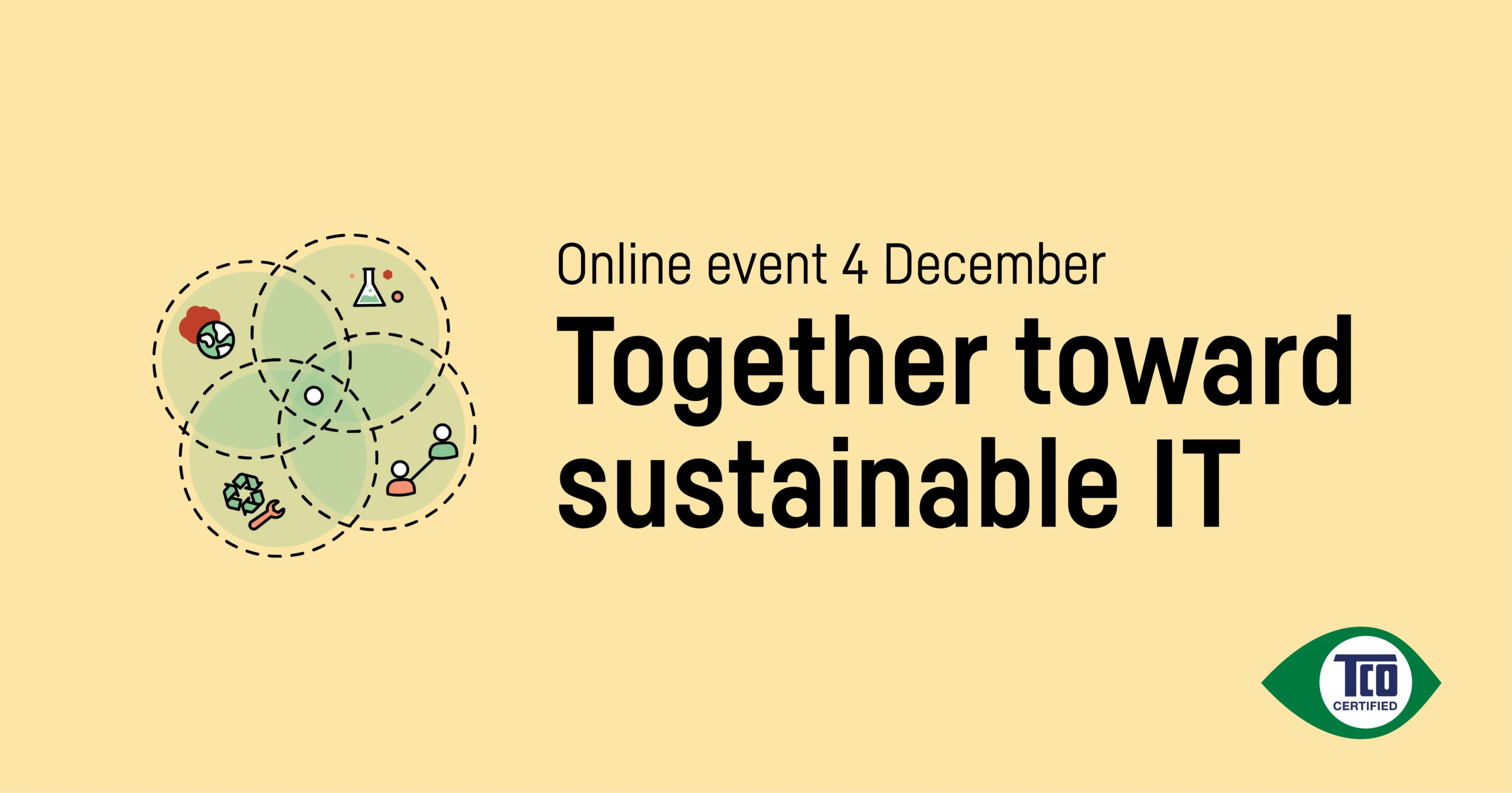Today’s circularity agenda includes environmental sustainability factors such as climate and resource consumption. Stephen Fuller, expert in supply chain management at TCO Development, argues that social issues must also be included — and that human and worker rights can actually be used as levers to accelerate our transition to a circular economy.
By: Stephen Fuller, Senior Criteria Manager, supply chain and chemical management, TCO Development.
“The electronic devices we purchase are the result of a manufacturing process through a complex supply chain. From the miners that dig up the minerals used in electronic components all the way to the final assembled product, there are thousands of workers involved in a device’s production. Compared to other product supply chains such as textiles, the multi-tiered supply chain of the IT industry dwarfs all others and should realistically make these products very expensive and valuable to us. A major reason why their price and value remains low is that these complex supply chains make it difficult to manage human rights risks and they contain a high concentration of cheap labor. So it is perhaps unsurprising that the majority of the world’s IT production takes place in the developing world. There, local governments are known to ignore human rights and established labor laws to stimulate business investment. The electronic devices we buy remain cheap as long as we accept that the abuses of human rights, working conditions, labor rights and social benefits the workers endure to make them can continue.
If we want a circular economy, we must consider social responsibility. In fact, treating workers in the IT industry fairly can help speed up the transition to the circular economy. In meetings with IT product manufacturers, I’ve often heard that investing in social improvements to meet the criteria in TCO Certified results in an increase in production costs and a reduction in revenue. It’s not surprising — giving workers a reasonable salary and social benefits will of course increase the cost of manufacturing. However, it is the only reasonable way to go, and apart from the fact that respecting workers’ rights promotes a healthier working environment, it will also make the circular take-make-use-reuse economy all the more possible.
Why? Because higher production costs will mean higher purchasing prices, and that is the single most effective way of driving the development of longer lasting products that users want to keep, service, and repair rather than dispose of and replace.
More expensive IT devices will also be an incentive for IT brands to give more room to circular business models, for instance product-as-a-service solutions where the IT brand retains ownership of the product and the user pays for the function and value it can offer during a set time period. Suddenly, revenue generation is not exclusively linked to selling as many products as possible. Instead, it makes business sense to manufacture durable IT devices that are designed for a long life, and that can be repaired and upgraded so that each product can be leased for as long as technically possible. This is of course a dream scenario for anyone who wants to realize the circular economy.
“If we are prepared to pay the true environmental and social costs of our IT use, the circular transition can be made in a way that benefits everyone.”
So, if social responsibility in the IT product supply chain can lead to worker well-being, environmental stability, and create new job opportunities connected to circularity, why has so little progress been made?
In many countries where IT products are manufactured, local governments do not enforce human rights and labor laws, which means that responsibility falls to manufacturers and brand owners to make sure workers in their supply chain are treated fairly. Two problematic issues are excessive working hours and living wages. These issues are interconnected, since as long as minimum wage levels do not provide workers with enough income to cover their living costs, they are more likely to agree to or request to do excessive overtime. Excessive overtime leaves a worker with little to no time over for rest, recreation, family or further education. Requiring IT manufacturers to take responsibility for these issues when local governments are not doing so is challenging. Allowing workers reduced working hours and a higher salary are improvements that lead to an increased price of the delivered product. By implementing such improvements, the manufacturer risks losing a client’s business to other less scrupulous competitors to maximize profits and keep retail prices competitive.
TCO Certified has included criteria on socially responsible manufacturing since 2009 with many successes. One of the main drivers for brand owners and manufacturers to implement more sustainable practices has been financial incentive, where TCO Certified is used as a tool for winning public and private procurement contracts. We listened to manufacturers telling us about the risk of losing contracts and financial support if they invested in social improvements. To combat these negative outcomes, we started categorizing factories based on risk in TCO Certified generation 8, allowing brand owners to choose factories that work proactively with social issues. This way, more ambitious factories get more business, which is an incentive for factory management to prioritize their work with sustainability, invest in improvements and implement labor laws. Factories that don’t fulfil requirements are removed from our accepted factory list and are no longer permitted to manufacture certified products. This is a huge shift. For the first time, we turn what used to be a business disadvantage — providing better working conditions for employees — to a business advantage, and by doing that, the pace of implementing social and environmental responsibility in the supply chain of IT products can quicken.
It’s widely accepted that the short life we currently give IT products leads to a number of sustainability issues that need to be addressed very urgently. Manufacturing a sustainable product is not just about which product uses the most recycled content or is the easiest to recycle. It is the whole life cycle of the product that tells us if it is truly sustainable. How it is made, used, and treated at the end of its usable life. By allowing social considerations within this chain to drive circular development, we can create sustainable solutions that benefit both people and the environment in the long term. If we are prepared to pay the true environmental and social costs of our IT use, the circular transition can be made in a way that benefits everyone.”




